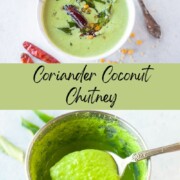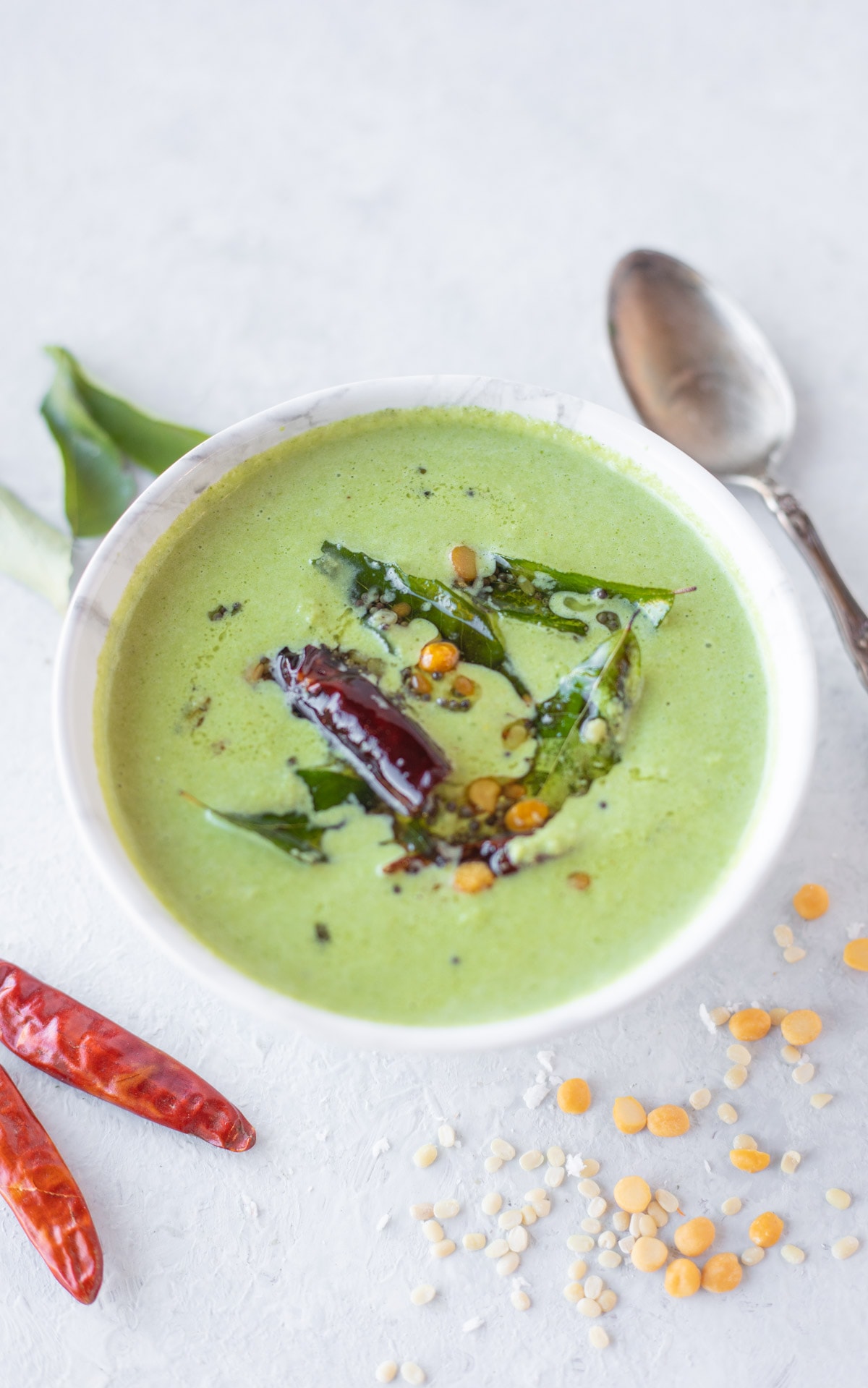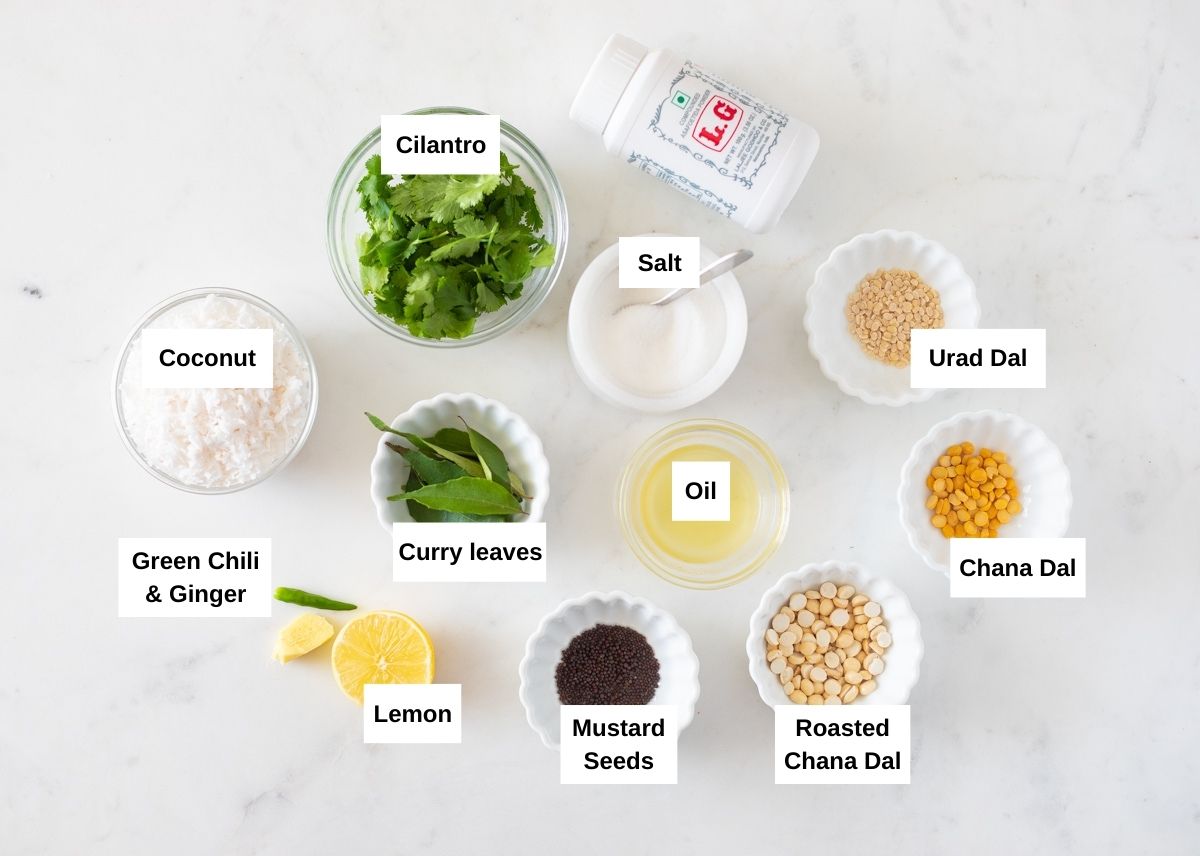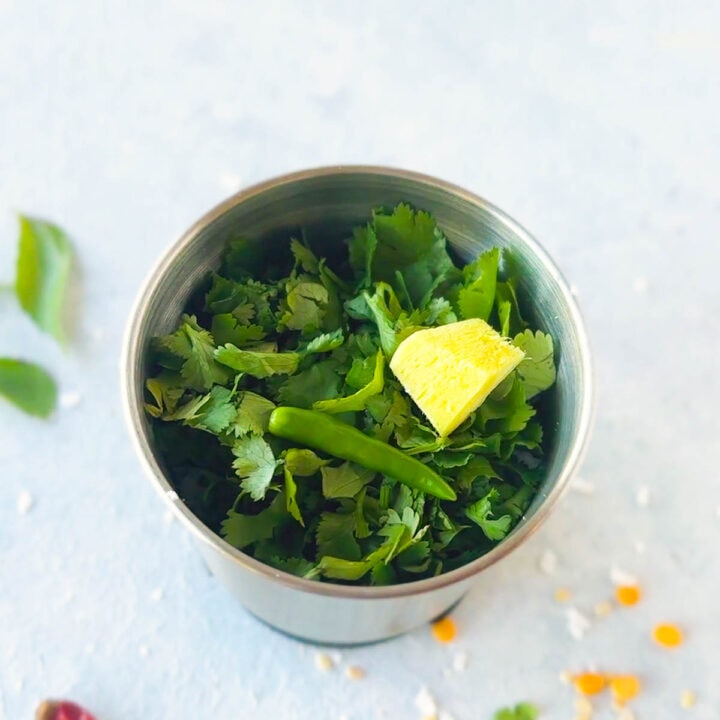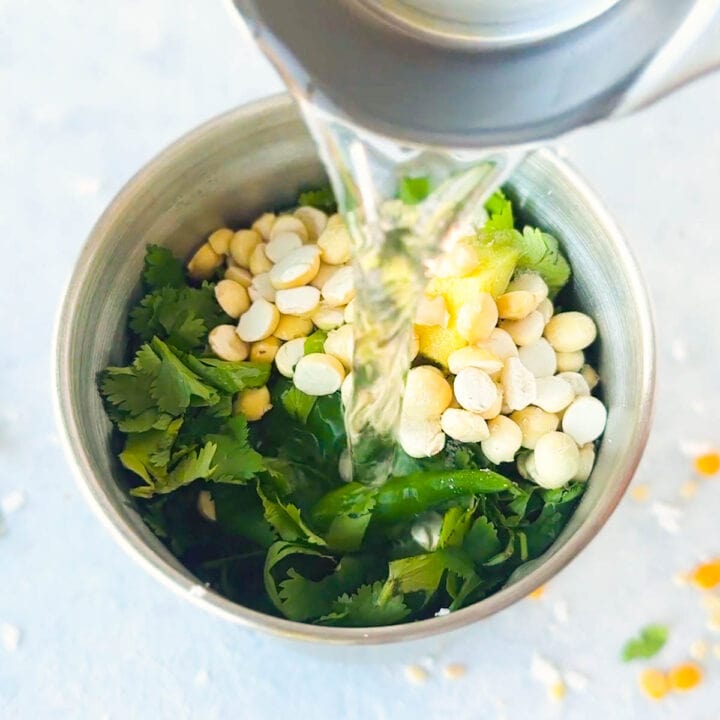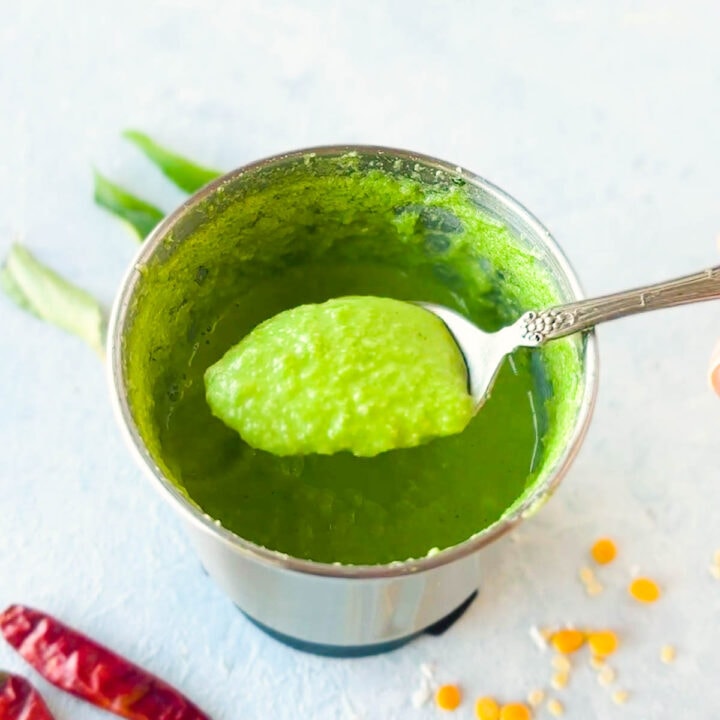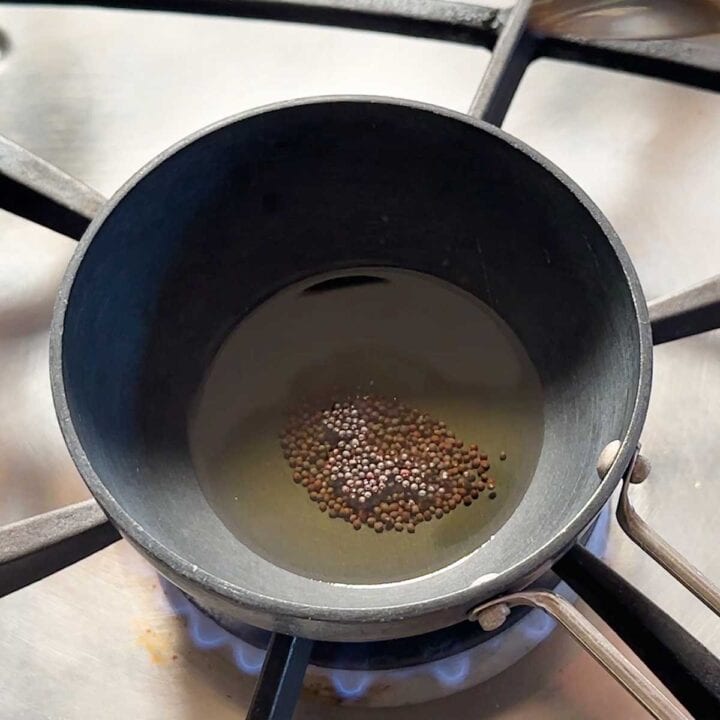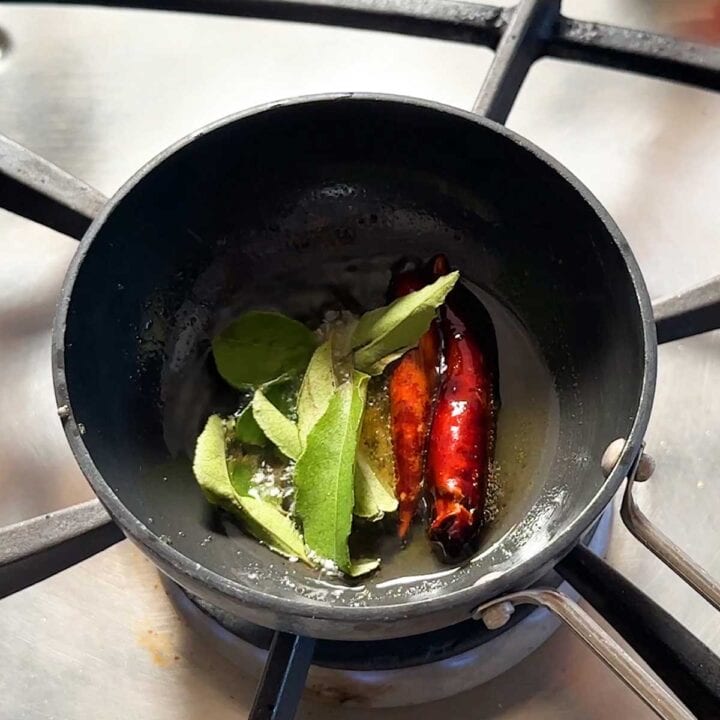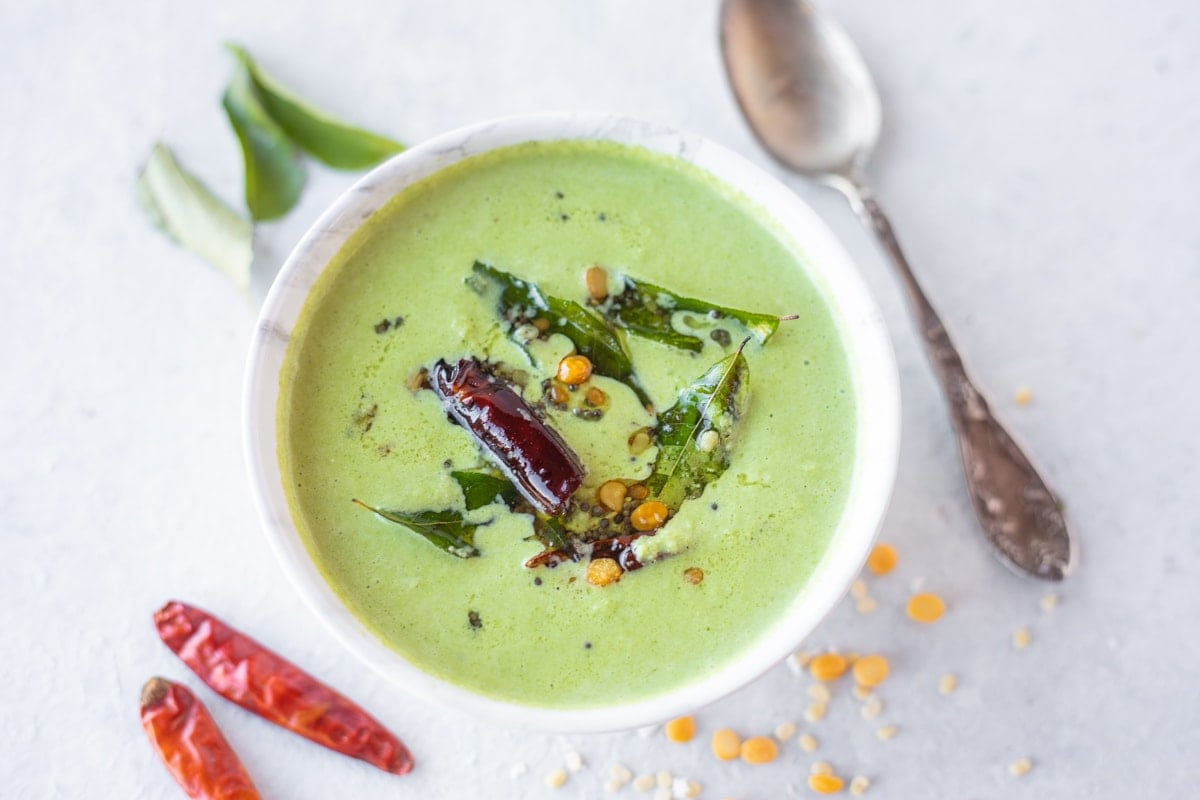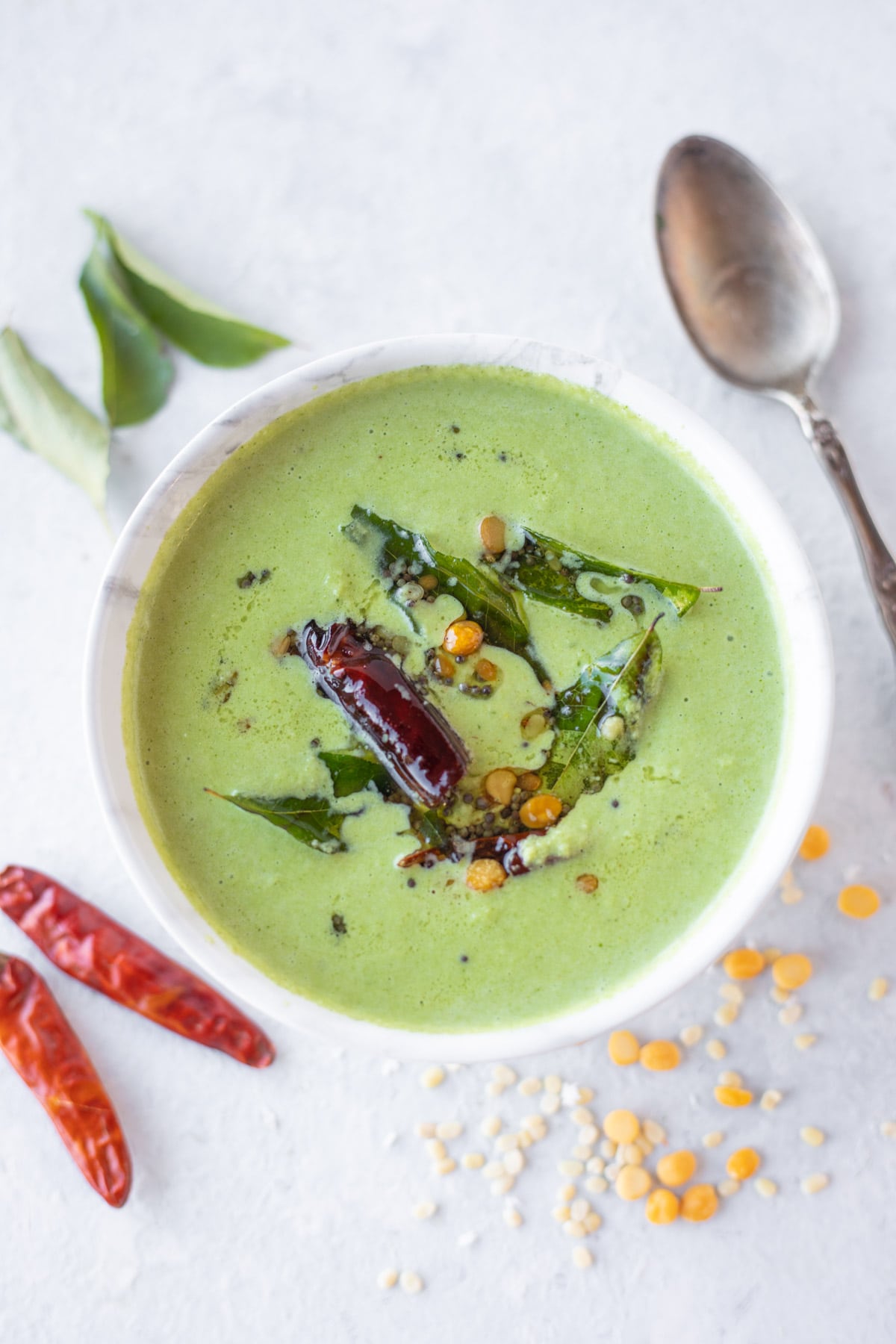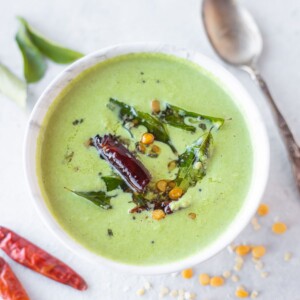This chutney is a variation made with cilantro leaves for my basic coconut chutney recipe. Coriander coconut chutney goes well with South Indian dishes like idli and dosa, similar to peanut chutney. This chutney is very easy to prepare: grind the coconut and cilantro along with some aromatics, then add a quick tadka (tempered seasoning) to it, and it is ready to be served. Accompanying your meal with chutney can add flavor, variety, and many healthy nutrients to your diet. This chutney is not only delicious but also very nutritious because it contains the goodness of both coconut and cilantro, which are great sources of antioxidants, dietary fiber, vitamins A, C, and K, as well as iron and calcium.
Watch How to Make Coriander Coconut Chutney
Coconut Benefits
Coconut has been used in Pacific and Asian cultures for a long time. However, now it has become popular all over the world, with people realizing its health benefits. Even though coconut is rich in calories and fats, it is considered one of the healthiest fats. Coconuts are rich in lauric acid, which is known for being antiviral, antibacterial, and antifungal and boosts the immune system.
Why you’ll love this recipe
It only needs simple ingredients. Can be made in less than 15 minutes. Pairs perfectly with any south Indian dish! It tastes better when made ahead of time. It keeps well in the fridge for up to 3 days and can even be frozen!
Ingredients you’ll need
Cilantro: To make the chutney, use fresh cilantro. The herb’s leaves and soft, green stems can be used, but I advise removing the bottom 2 inches because they may be bitter. Coconut: For this chutney, freshly grated coconut works best. However, you can also use frozen coconut if you cannot find it fresh. Some people also like to use desiccated coconut to make this chutney. Green Chili: For the heat, use green chili; you can adjust the amount to your taste. Ginger: Ginger adds a little spice kick to this chutney. Roasted chana dal: Don’t skip the roasted chana dal, also known as Dalia in Hindi, as it gives the chutney a wonderful creamy texture. Lemon Juice: The lemon juice gives the nariyal chutney a fresh taste. You could also use tamarind paste in place of it. Tempering: You’ll need oil, mustard seeds, urad dal, hing (asafoetida), curry leaves, and dry red chili.
How to make Coconut Chutney?
Grind together all ingredients mentioned for chutney – coconut, cilantro leaves, ginger, green chili, roasted chana dal, and salt.
Add water in small quantities as needed to assist in grinding and to get the desired consistency. Remove and set aside in a bowl.
Heat oil in a small pan and add mustard seeds. Once they splutter, add the urad dal.
Once the dal turns golden, add the asafoetida, dry red chili, and curry leaves. Cook for about a minute until the curry leaves turn crispy. Then turn off the heat.
Note: When you add the curry leaves, the oil will start to splutter. You can take the tadka pan off the heat as needed.
Tadka is ready, pour it into the chutney immediately. Stir gently.
Chutney is ready to be served with idli or dosa.
Pro Tips
This coconut cilantro chutney recipe tastes and feels best when you use freshly grated coconut. We also like this chutney made with frozen coconut. Depending on your desire, you can make the chutney thicker or thinner by altering the water. Depending on your preferences, you can adjust the amount of green chili and ginger. If you’re using frozen coconut, let it get to room temperature before putting it in the blender. If you blend the frozen coconut, the fats may come out of the pulp.
Variations & Substitutions
Lime juice: You can use tamarind paste in place of lime juice for a tangier flavor. Roasted Chana Dal: Instead of roasted chana dal (dalia), you can thicken the chutney with roasted peanuts, cashews, or almonds too. Ginger: You can use one or two cloves of garlic in place of ginger. Or ginger can be entirely omitted.
Serving
Serve this chutney with steaming hot South Indian foods like idlis, dosa, uttapam, etc.. It can also be served as a side with upma, ven pongal or millet pongal, and sambar. You can use it as a dip for pakoras or sabudana vada.
How to store
Refrigerator: You can keep this coriander coconut chutney in an airtight container in the fridge for up to 2 days. Freezer: You can store this chutney in a container that can go in the freezer, you can keep it fresh for up two months longer. To use, thaw overnight in the refrigerator, adjust the thickness by adding water, and enjoy!
More South Indian Recipes
Semiya Upma Quinoa Dosa Bisi Bele Bath Millet Pongal Mango Dal
